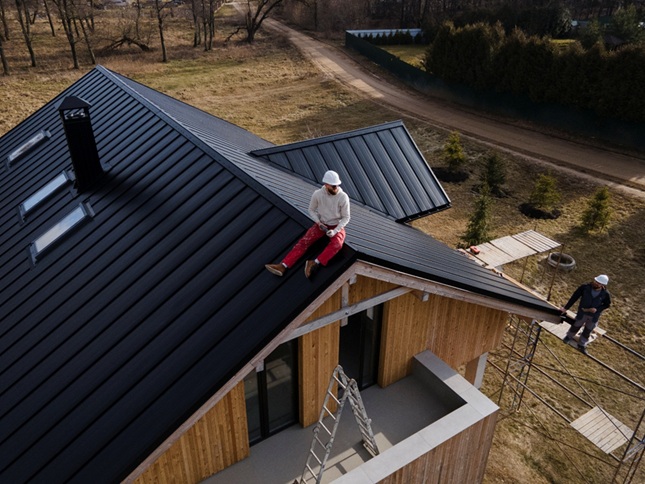A roof is not only a covering but also the first line of protection of your home from the outside elements. It is important to understand when to change your roof to ensure that your home remains safe, efficient and valuable. Although the replacement of a roof may sound overwhelming, taking action in time will help you avoid spending thousands of dollars and paying for the damage caused to your house by water and mold, as well as the rotting of the structure. We may divide the major symptoms, causative factors, and schedules so that you understand when to think of a new roof.
Recognizing When It’s Time to Replace Your Roof
Depending on the material, weather exposure and quality of installation, the average roof life can be anything between 20 and 100 years. However, even the best roofs need eventual replacement. Extreme weather conditions in areas such as the Midwest hasten the process of wear and tear in roofing systems. That’s why property owners in states often consult trusted professionals like Custom Installations to evaluate damage and plan timely replacements.
Key Indicators Your Roof Needs Replacement
To prevent severe cases of water entering the building, mold development, or even the building collapsing, it is vital to detect the early signs of roof damage. Some of the signs to watch out for are the age of your roof; most are made of asphalt shingles that last 20-30 years, wood shake 25-40 years, metal 40-70 years, clay or concrete tile 50-100 years, and slate can last up to or over a century. In case your roof is getting older and is worn out, then you may want to consider replacing it.
The underlayment may be exposed to leaks since visible damage, curling, buckling, or missing shingles may occur. Wet stains or black spots on the ceilings usually point to minor leaks that, when left unattended, may cause mold and damage to structures. Finally, a slumping roof deck is another significant issue, which usually occurs when moisture is trapped and undermines the support system, and it requires urgency to be addressed to avert the collapse.
What Impacts Roof Longevity?
Even the strongest of roofing materials will prematurely wear out under severe external conditions. Other factors, such as climate, are also significant, as extreme weather conditions such as sun, snow, hail, or strong winds can accelerate wear. As an illustration, shingles may crack under the influence of freeze-thaw cycles, asphalt may become brittle in the sun, and leaks can be produced by ice dams, which will lead to consistent water leakage.
Moreover, improper attic ventilation will result in heat and moisture being trapped in the attic, which will lead to mold growing and accelerating deterioration of materials as well as the roof itself, and good ventilation allows keeping the environment balanced and will help the roof last longer. Finally, installation quality matters most, as misaligned shingles, low-quality flashing, and underlayment may greatly decrease the durability and functionality of a roof in the long-term perspective.
Material Breakdown: Lifespans and Prospects
So, what is the life expectancy of the typical roofing materials and their performance? Let us have a closer look:
| Material | Average Lifespan | Pros | Cons |
| Asphalt Shingles | 20–30 years | Affordable, easy to install | Shorter life in harsh climates |
| Metal Roofing | 40–70 years | Durable, fire-resistant, energy-efficient | Higher upfront cost |
| Clay/Concrete Tiles | 50–100 years | Long-lasting, weather-resistant | Heavy, requires strong framing |
| Slate | 75–100+ years | Elegant and highly durable | Expensive and fragile to walk on |
Maintenance Tips to Extend Roof Life
Proper care ensures your roof serves you well beyond its expected lifespan:
- Inspect Twice Annually: Spring and fall are ideal for checking for damage or wear.
- Clean Gutters: Clogged gutters can lead to pooling water and roof leaks.
- Trim Overhanging Branches: Falling limbs and trapped moisture speed up roof aging.
- Address Issues Promptly: Even a small leak should be taken seriously to avoid deeper damage.
Final Thoughts
It is not just about counting the years: how frequently you should change your roof depends on the inspections, being aware of the warning signs and adjusting to the climate-related stressors. It does not matter whether your house is covered in asphalt shingles that are close to 25 years old or your house has a metal roof and is subject to the Midwestern storms; it is always necessary to be proactive. Homeowners can make sound decisions when they have quality materials and proper maintenance, and with the help of professionals, such as Custom Installations, they will be able to preserve their investment, which lasts decades.




